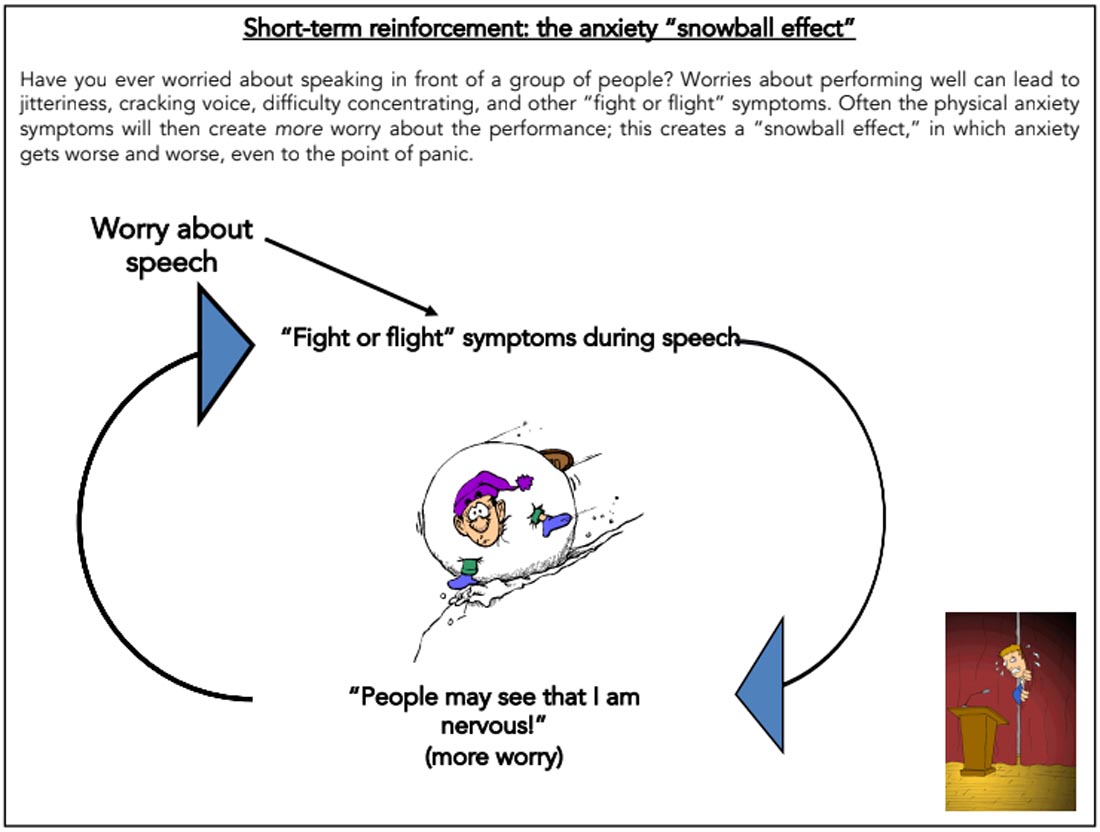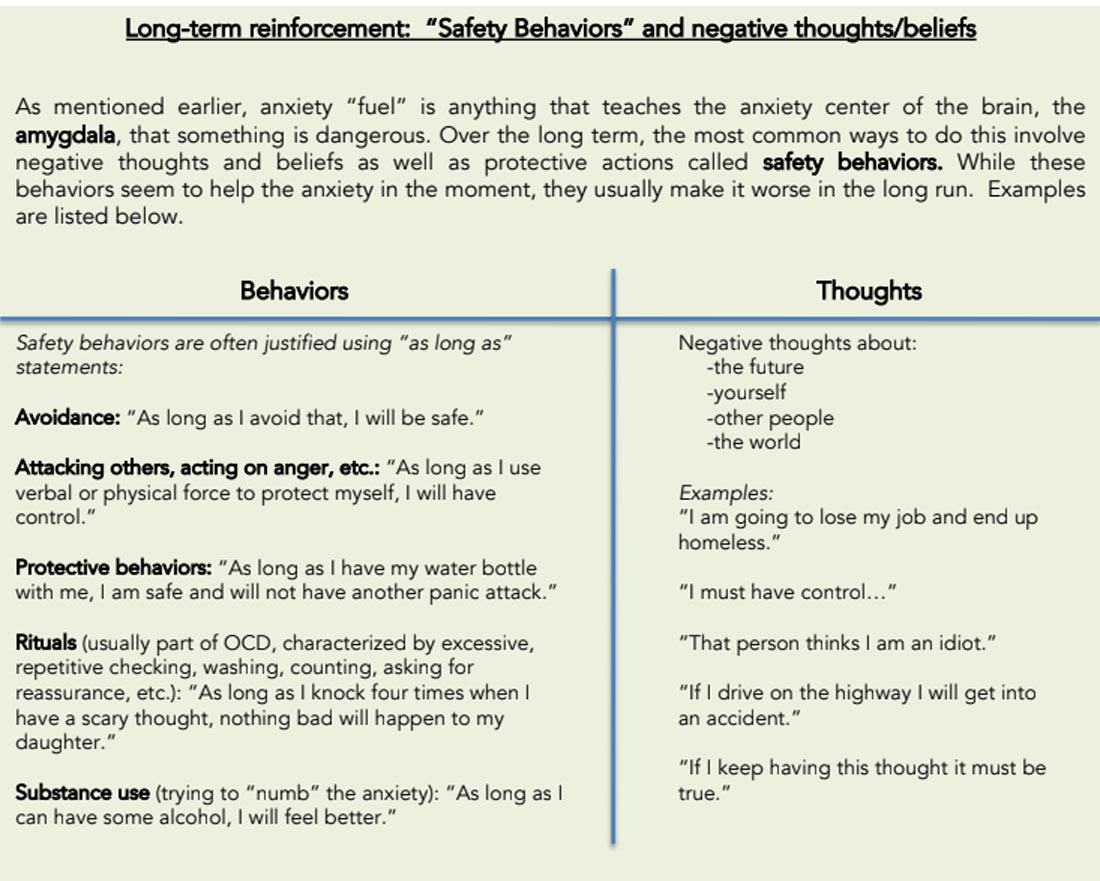When we feel anxious, we typically want to do something to make ourselves feel better. Most of these behaviors feel natural because our bodies also want to keep us safe. However, some of these behaviors can make things worse; by adding “fuel” to the anxiety “fire.” We can add fuel gradually over time or dump lots on all at once. In all cases the anxiety “fire” gets bigger.
What behaviors are in danger of causing the anxiety to get worse? Anything that teaches the amygdala (the anxiety center of the brain) that something is dangerous. Remember our spider example? Let’s say that every time this man sees a spider he tries to avoid it by getting away. What does this teach him? That the spider is dangerous, of course!
Each time he avoids the spider, his amygdala gets more feedback that the spider is dangerous. Next time he sees the spider, his anxiety “alarm” will be louder, or it may go off more quickly than before. The process by which the brain learns that something is more dangerous over time is called sensitization. It is also called reinforcement of the anxiety because the anxiety response gets stronger and stronger. Reinforcement can happen both in the short term (when the danger seems to be present) or in the long term, as we discuss below.


Whether in the short run or over time, anxiety feelings, fearful thoughts, and protective, “safety” behaviors work together to keep our anxiety “fire” burning. Each feeds off the others, and any one of these can act as the “match” to get the fire started. Our goal is to work on these thoughts and behaviors to help extinguish the fire as much as possible.
